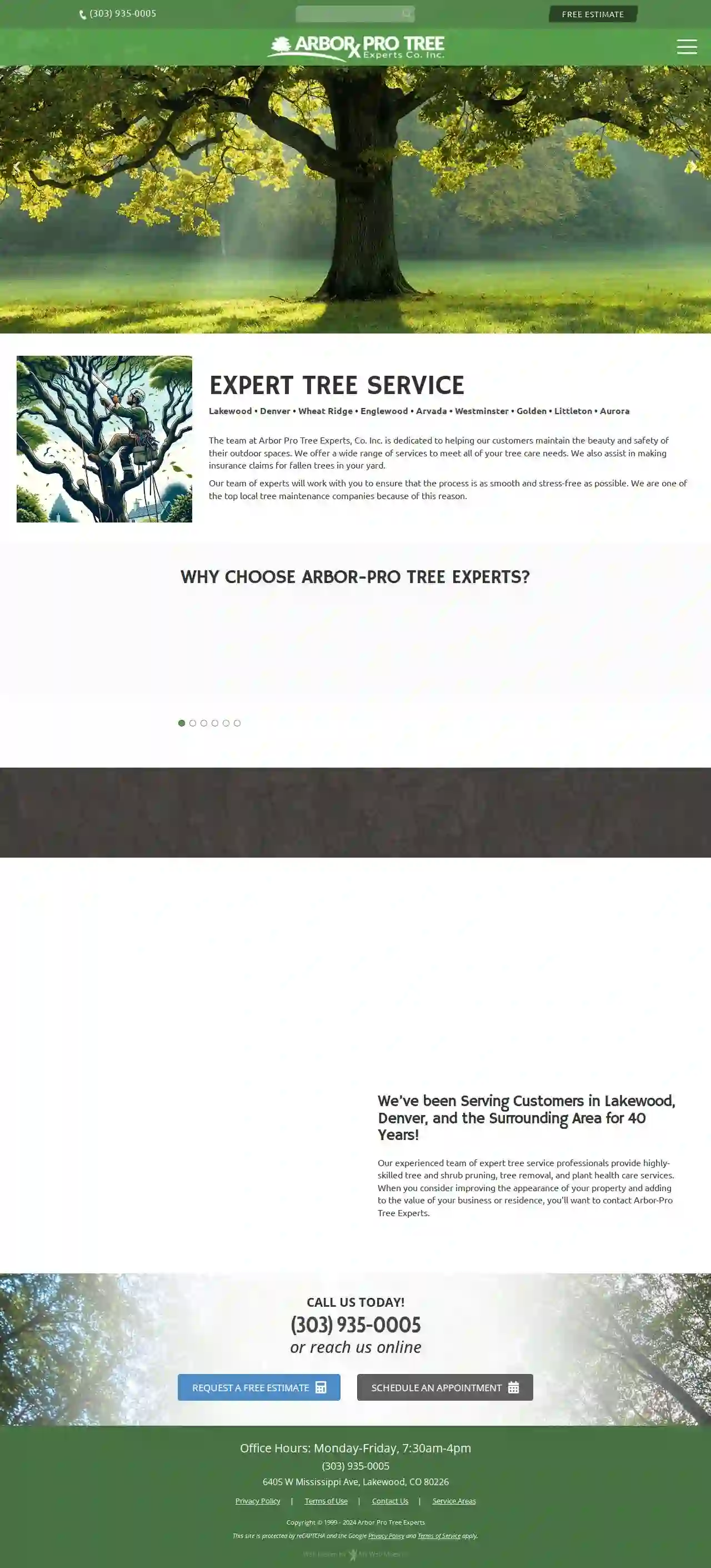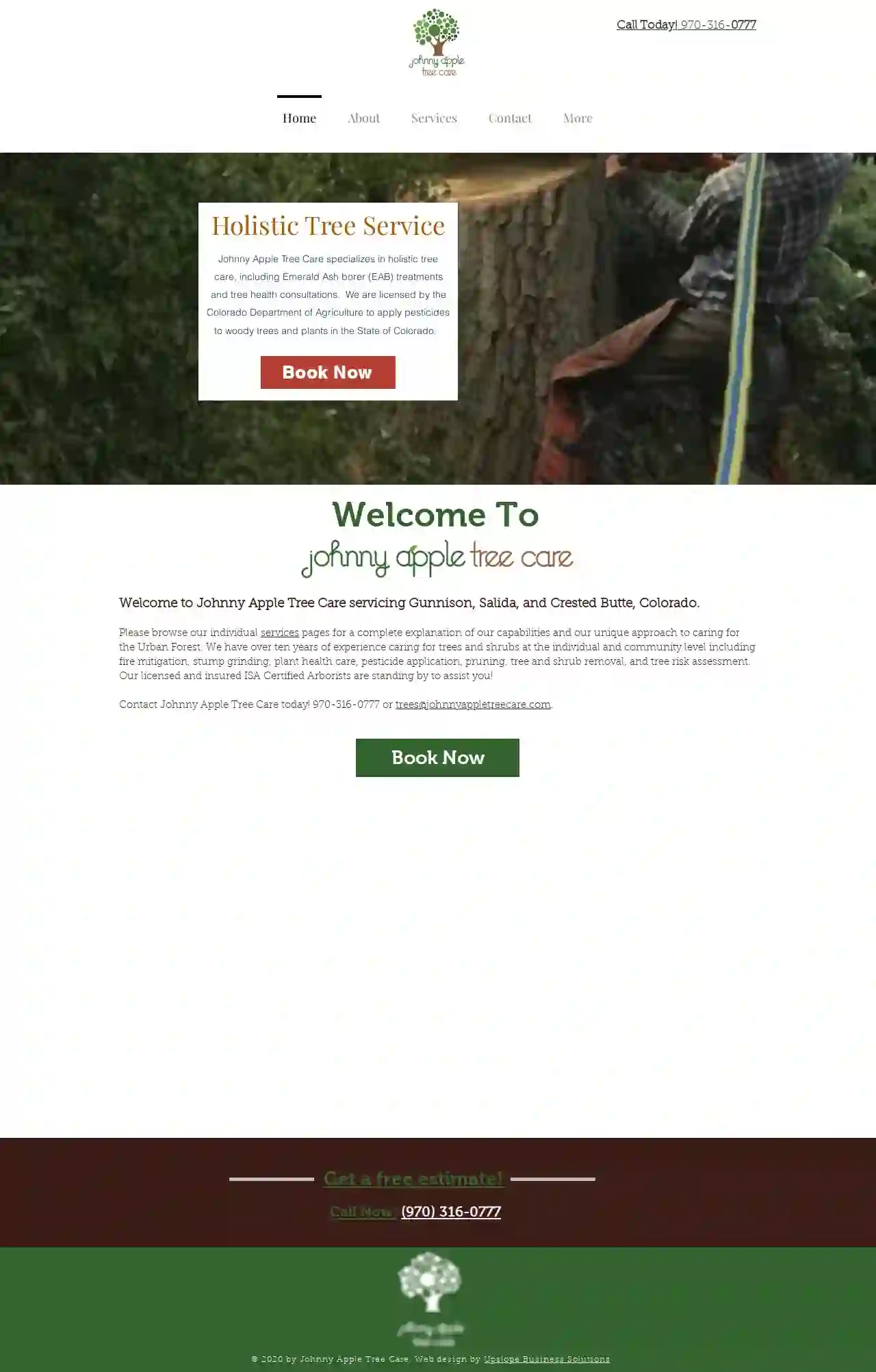Tree Trimming Denver
Find Tree Trimming Service in Denver
Receive multiple Tree Trimming Service quotes for your project today! Compare profiles, reviews, accreditations, portfolio, etc... and choose the best deal.

5280 Trees
4.874 reviewsLakewood, CO, 80232, USWelcome to 5280 Trees, Lakewood, CO’s trusted tree service provider. With 24 years of experience, we understand Colorado’s trees and shrubs’ unique needs. We specialize in a wide range of services, including tree removal, tree pruning, tree & shrub health care, stump grinding, and tree planting. Trust us to keep your trees healthy, safe, and beautiful.
- Services
- Why Us?
- Gallery
Get Quote
DLC Arbor Services, LLC
4.8153 reviews123 Vallejo St., Denver, 80223, USDLC Arbor Services, a professional tree service company operating in the Denver area since 1980, is licensed and insured for pruning, tree and stump removal, insect and disease control, and fertilization. We are an A+ BBB Accredited Business and recommended by Team Dave Logan. Our arborist generates a quotation, and the job begins upon customer approval. Our customers benefit because all tree service work completed follows tree industry-accepted best practices. We do not propose any unnecessary tree service work beyond our arborist’s diagnosis.
- Services
- Why Us?
- Accreditations
- Gallery
Get Quote
Arbor Pro Tree Experts Co. Inc.
3.862 reviewsLakewood, CO, 6405 W Mississippi Ave, 80226, USArbor-Pro Tree Experts, Co. Inc. is dedicated to helping customers maintain the beauty and safety of their outdoor spaces. We offer a wide range of services to meet all of your tree care needs. Our team of experts will work with you to ensure that the process is as smooth and stress-free as possible.
- Services
- Why Us?
- Accreditations
- Our Team
- Testimonials
- Gallery
Get Quote
SavATree
4.6241 reviewsLakewood, CO, 5717 West 11th Avenue, 80214, USSavATree is a professional tree care and lawn care service provider with a strong commitment to environmental sustainability and social responsibility. Our team of certified arborists and experts in tree care and lawn care offer a variety of services including tree pruning, tree removal, tree disease treatment, tree fertilization, and more. We also provide commercial tree services and consulting for permitting, construction, and compliance. Our goal is to protect and preserve the value and safety of your property.
- Services
- Why Us?
- Accreditations
- Our Team
- Testimonials
- Gallery
Get Quote
Denver Trim And Removal
520 reviewsDenver, USWelcome to Denver Trim and Removal, a top-notch, reliable tree service in Denver. Our team is enthusiastic about tree care, and we work with ISA-Certified Arborists and Tree Risk Assessment Qualified Arborists to provide high-quality services. We are both ISA certified and fully insured. Our main priority is your relief. We offer a variety of services including emergency tree cleanup, plant health care, stump removal, firewood for sale, fire mitigation, tree planting, and transplanting.
- Services
- Why Us?
- Gallery
Get Quote
Dubois Tree Service LLC
44 reviewsDenver, USThis Townsquare Interactive website is no longer available. If you have any questions please feel free to contact our support team at: [email protected]
- Services
- Why Us?
- Gallery
Get Quote
Johnny Apple Tree Care
4.410 reviews123 Main St, Gunnison, 81230, USWelcome to Johnny Apple Tree Care, a holistic tree care service specializing in Emerald Ash borer (EAB) treatments and tree health consultations. We are licensed by the Colorado Department of Agriculture to apply pesticides to woody trees and plants in the State of Colorado. Our team of licensed and insured ISA Certified Arborists have over ten years of experience caring for trees and shrubs at the individual and community level including fire mitigation, stump grinding, plant health care, pesticide application, pruning, tree and shrub removal, and tree risk assessment.
- Services
- Why Us?
- Accreditations
- Gallery
Get Quote
Blue River Forestry & Tree Care
4.981 reviewsDenver, US- Services
- Why Us?
Get Quote
Colorado Cut Tree Service LLC
528 reviews1234 Main St, Unit A, Denver, 80209, USWe specialize in helping clients increase the value and beauty of their homes by creating elegant outdoor living spaces. Our company pays special attention to the details of every project to ensure the complete satisfaction of each client. Our goal is to enhance the exterior of your home, raise your property value, and beautify your whole neighborhood.
- Services
- Why Us?
- Gallery
Get Quote
Zepp's Stump Grinding & Removal
515 reviewsZepp's Stump Grinding & Removal, 720-410-5256, Denver, CO, 80206, USZepp's Stump Grinding & Removal is a local business based in Denver, CO, that specializes in providing affordable and professional stump grinding services. The business is owned and operated by Kevin Zepp, who has been serving the Denver metro area, foothills, and within 1.5 hours of Denver up into the mountains for about 5 years. Kevin is dedicated to providing fast and professional service, ensuring that customers receive the best possible experience. He is passionate about spending time outdoors and enjoys activities such as fishing, hiking, snowmobiling, and skiing.
- Services
- Why Us?
- Accreditations
- Our Team
- Testimonials
- Gallery
Get Quote
Over 1,985+ Tree Surgeons on our platform
Our tree care experts operate in Denver and surroundings!
TreeServiceMatch has curated and vetted the Best Tree Surgeons near Denver. Find a reliable pro today.
Frequently Asked Questions About Tree Trimming
- Species: Some trees require more frequent trimming than others.
- Age: Younger trees benefit from more frequent pruning to establish good structure.
- Health: Diseased trees might need more frequent attention.
- Growth rate: Faster-growing trees require more regular pruning.
- Location: Trees near structures or power lines might need more frequent trimming for safety.
- Make clean cuts: Use sharp, clean pruning tools to prevent the crushing or tearing of branches, reducing the risk of disease and decay.
- Follow the branch collar: This is the swollen area at the base of the branch. Never cut back into the branch collar, as this creates a wound that is difficult for the tree to heal.
- Remove dead, damaged, or diseased branches: This improves tree health and reduces hazards.
- Thin the crown: Selectively remove branches from within the crown to improve light penetration, air circulation, and reduce wind resistance. Thinning helps to maintain the natural shape of the tree without reducing its overall size.
- Reduce the crown: If necessary, reduce the size of the crown by shortening the branches back to strong lateral branches. This helps manage the size of the tree without damaging it.
- Avoid topping: Topping is a harmful practice that creates ugly growth and weakens trees. Never top your trees.
- Size and shape of the tree: The larger the tree, the more extensive the work will be.
- Accessibility: If the tree is difficult to reach, specialized equipment might be needed.
- Type of pruning required: Crown reduction or thinning can increase costs.
- Location: Regional differences in labor costs will affect pricing.
- Waste disposal: Removing and disposing of pruned branches adds to the expense.
- Use sharp, clean tools: Dull tools can cause tearing or crushing of the branches and increase the risk of disease.
- Wear safety gear: Protective clothing, eye protection, and gloves are crucial.
- Inspect the tree: Identify the branches that need pruning, such as dead or damaged branches.
- Use proper pruning techniques: Make clean cuts, following the branch collar. Don't remove too much of the crown in a single session.
- Dispose of the branches responsibly: Chip the debris or dispose of it according to local guidelines.
How often should I trim my trees?
A general guideline is to have trees inspected at least every 1-2 years by a certified arborist. They can create a tailored maintenance plan that includes the appropriate pruning schedule.
What is the best way to prune a tree?
For complex pruning tasks, such as crown reduction or thinning, it's strongly recommended to hire a certified arborist who has the expertise and experience to perform the work properly and safely.
How much does it cost to trim a large tree?
Requesting quotes from multiple tree care companies is highly recommended for receiving competitive pricing and accurate estimates for large tree trimming projects. TreeServiceMatch will help you compare your options and make an informed choice.
How to prune a tree safely?
How often should I trim my trees?
- Species: Some trees require more frequent trimming than others.
- Age: Younger trees benefit from more frequent pruning to establish good structure.
- Health: Diseased trees might need more frequent attention.
- Growth rate: Faster-growing trees require more regular pruning.
- Location: Trees near structures or power lines might need more frequent trimming for safety.
A general guideline is to have trees inspected at least every 1-2 years by a certified arborist. They can create a tailored maintenance plan that includes the appropriate pruning schedule.
What is the best way to prune a tree?
- Make clean cuts: Use sharp, clean pruning tools to prevent the crushing or tearing of branches, reducing the risk of disease and decay.
- Follow the branch collar: This is the swollen area at the base of the branch. Never cut back into the branch collar, as this creates a wound that is difficult for the tree to heal.
- Remove dead, damaged, or diseased branches: This improves tree health and reduces hazards.
- Thin the crown: Selectively remove branches from within the crown to improve light penetration, air circulation, and reduce wind resistance. Thinning helps to maintain the natural shape of the tree without reducing its overall size.
- Reduce the crown: If necessary, reduce the size of the crown by shortening the branches back to strong lateral branches. This helps manage the size of the tree without damaging it.
- Avoid topping: Topping is a harmful practice that creates ugly growth and weakens trees. Never top your trees.
For complex pruning tasks, such as crown reduction or thinning, it's strongly recommended to hire a certified arborist who has the expertise and experience to perform the work properly and safely.
How much does it cost to trim a large tree?
- Size and shape of the tree: The larger the tree, the more extensive the work will be.
- Accessibility: If the tree is difficult to reach, specialized equipment might be needed.
- Type of pruning required: Crown reduction or thinning can increase costs.
- Location: Regional differences in labor costs will affect pricing.
- Waste disposal: Removing and disposing of pruned branches adds to the expense.
Requesting quotes from multiple tree care companies is highly recommended for receiving competitive pricing and accurate estimates for large tree trimming projects. TreeServiceMatch will help you compare your options and make an informed choice.
How to prune a tree safely?
- Use sharp, clean tools: Dull tools can cause tearing or crushing of the branches and increase the risk of disease.
- Wear safety gear: Protective clothing, eye protection, and gloves are crucial.
- Inspect the tree: Identify the branches that need pruning, such as dead or damaged branches.
- Use proper pruning techniques: Make clean cuts, following the branch collar. Don't remove too much of the crown in a single session.
- Dispose of the branches responsibly: Chip the debris or dispose of it according to local guidelines.